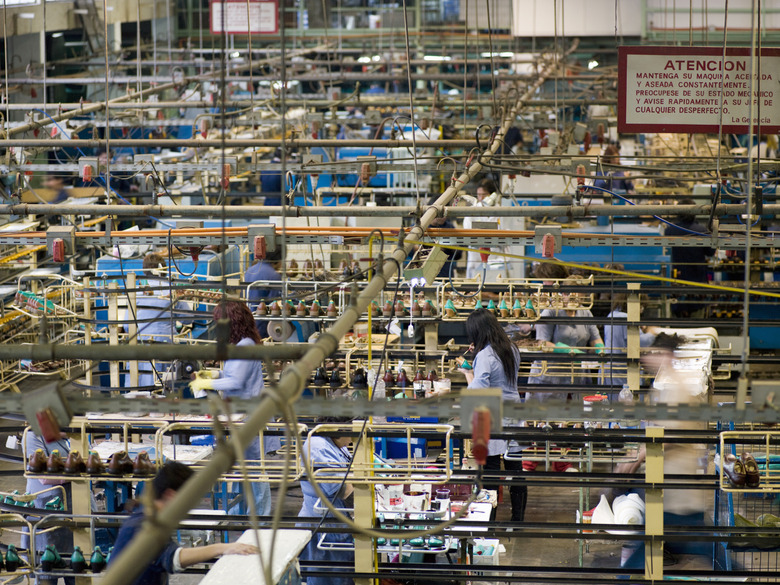What Are UCL & LCL?
UCL represents upper control limit on a control chart, and LCL represents lower control limit. A control chart is a line graph that displays a continuous picture of what is happening in production process with respect to time. As such, it is an important tool for statistical process control or quality control. The UCL and LCL on a control chart indicate whether any variation in the process is natural or caused by a specific, abnormal event that can affect the quality of the finished product.
Data Values
Data Values
A control chart is marked with three horizontal lines, known as the center line, upper control limit and lower control limit. The center line indicates the historical mean of the process. The upper and lower control limits, which are marked three standard deviations above and below the center line, indicate whether the process is operating as expected or is out of control, statistically.
Normal Distribution
Normal Distribution
A control chart is derived from a bell-shaped normal distribution, or Gaussian distribution, curve. Standard deviation (symbol σ) is a measure of the dispersion or variation in a distribution, equal to the square root of the arithmetic mean of the squares of the deviations from the arithmetic mean. In a well-controlled process, the upper and lower limits are equal to μ + 3σ and μ – 3σ, where μ is the process mean, because in a normal distribution 99.73 percent of the values lie with these limits.
Out of Control
Out of Control
When a process is in control, its control chart should exhibit a natural pattern and any variation in the process, known as common cause variation, should still produce data values within the upper and lower control limits. However, if abnormal or special cause variation occurs, it produces data values outside the control limits, otherwise known as "out of control points" on the control chart.
Western Electric Rules
Western Electric Rules
A set of rules known as the Western Electric Rules can test whether a process is out of control or not. A process is out of control if one point on the control chart lies outside the upper or lower control limit; if two or three consecutive points lie on one side of the center line at 2σ or beyond; if four or five lie on one side of the center at 1σ or beyond; or if eight consecutive points lie on one side of the center line, regardless of their distance from it.
Cite This Article
MLA
Dunning, David. "What Are UCL & LCL?" sciencing.com, https://www.sciencing.com/ucl-lcl-12011171/. 24 April 2017.
APA
Dunning, David. (2017, April 24). What Are UCL & LCL?. sciencing.com. Retrieved from https://www.sciencing.com/ucl-lcl-12011171/
Chicago
Dunning, David. What Are UCL & LCL? last modified March 24, 2022. https://www.sciencing.com/ucl-lcl-12011171/
